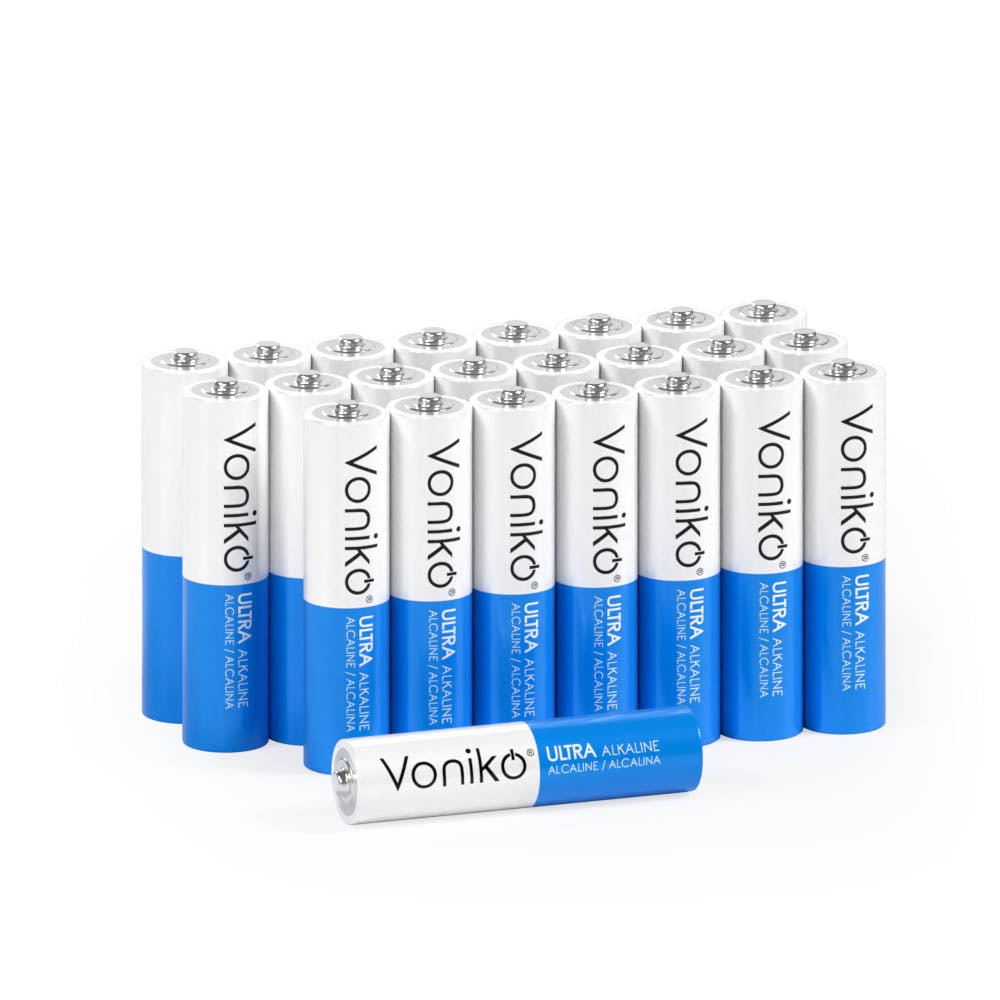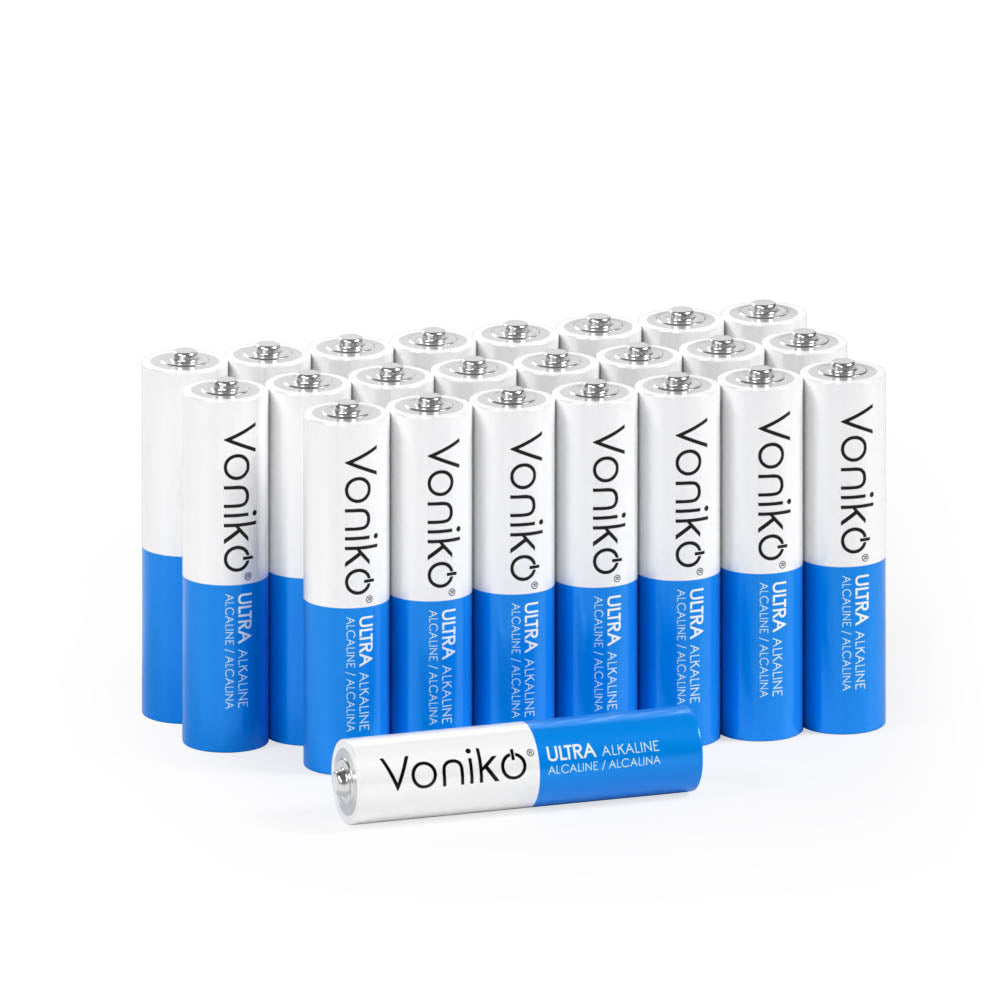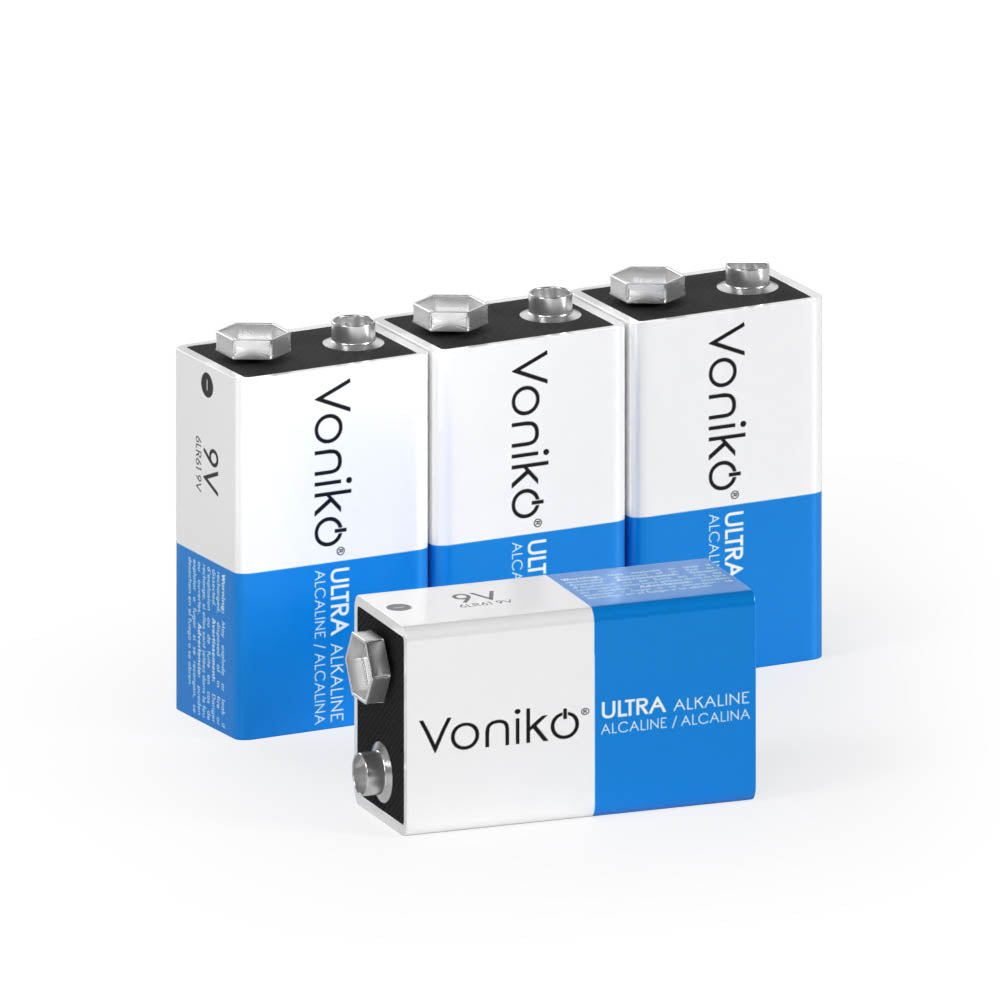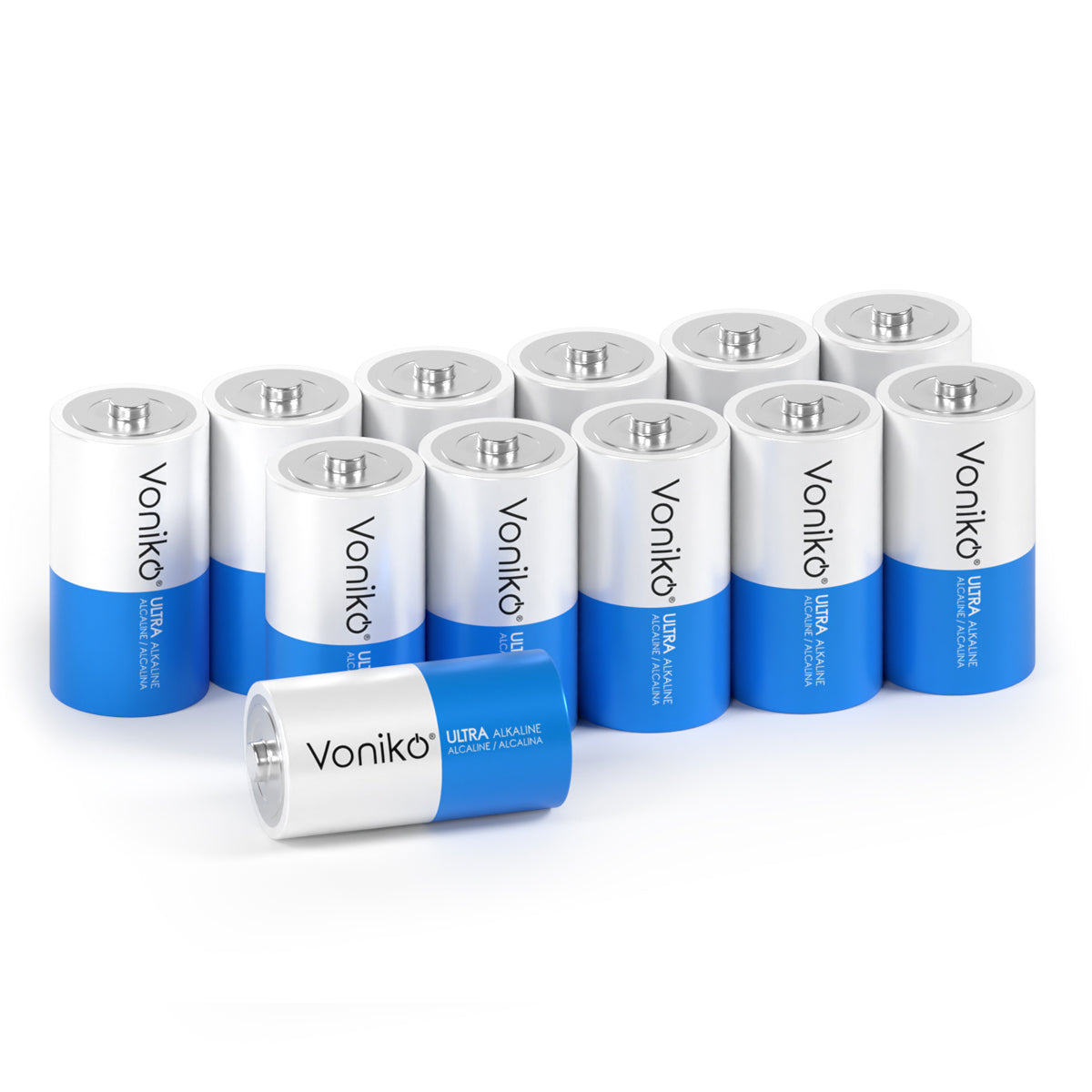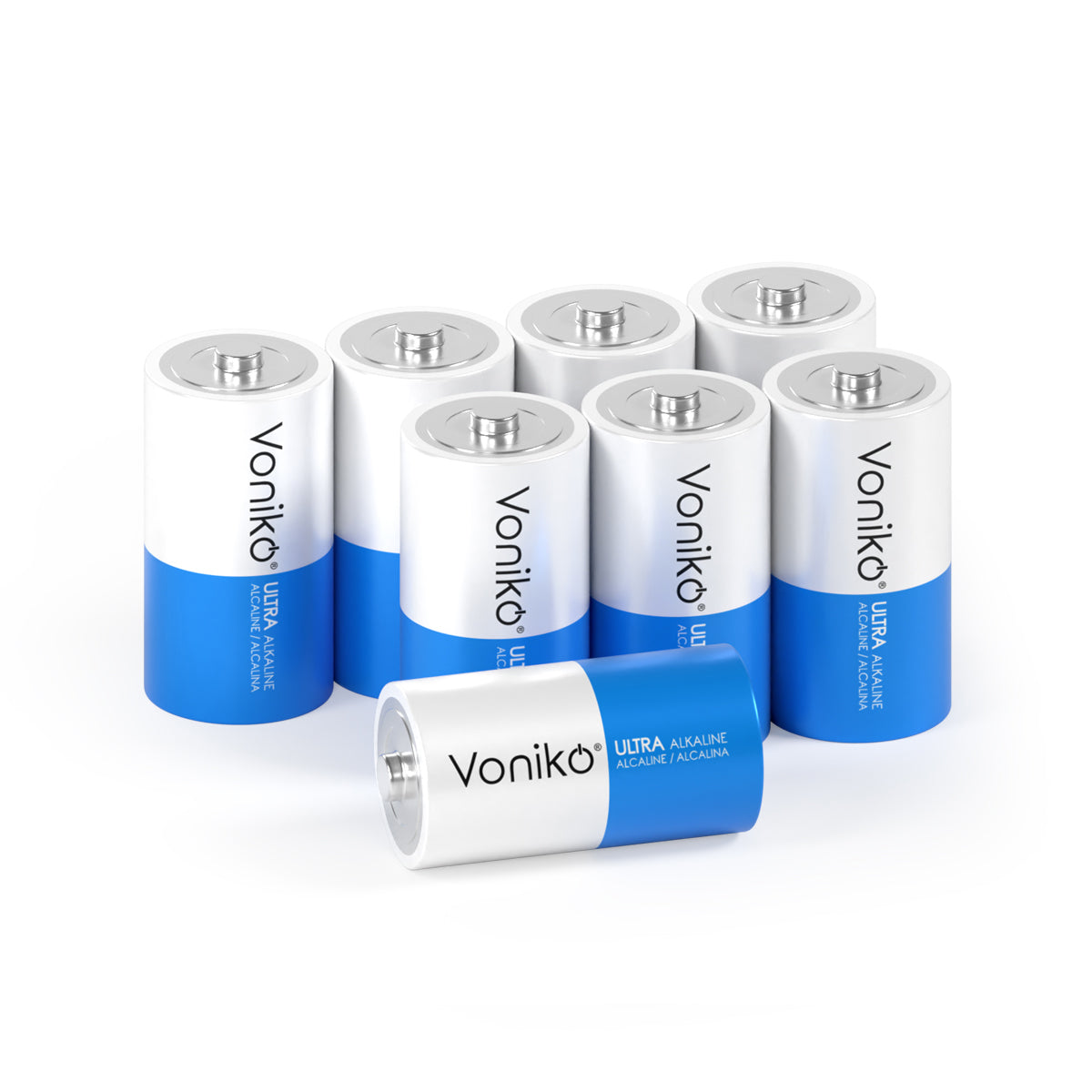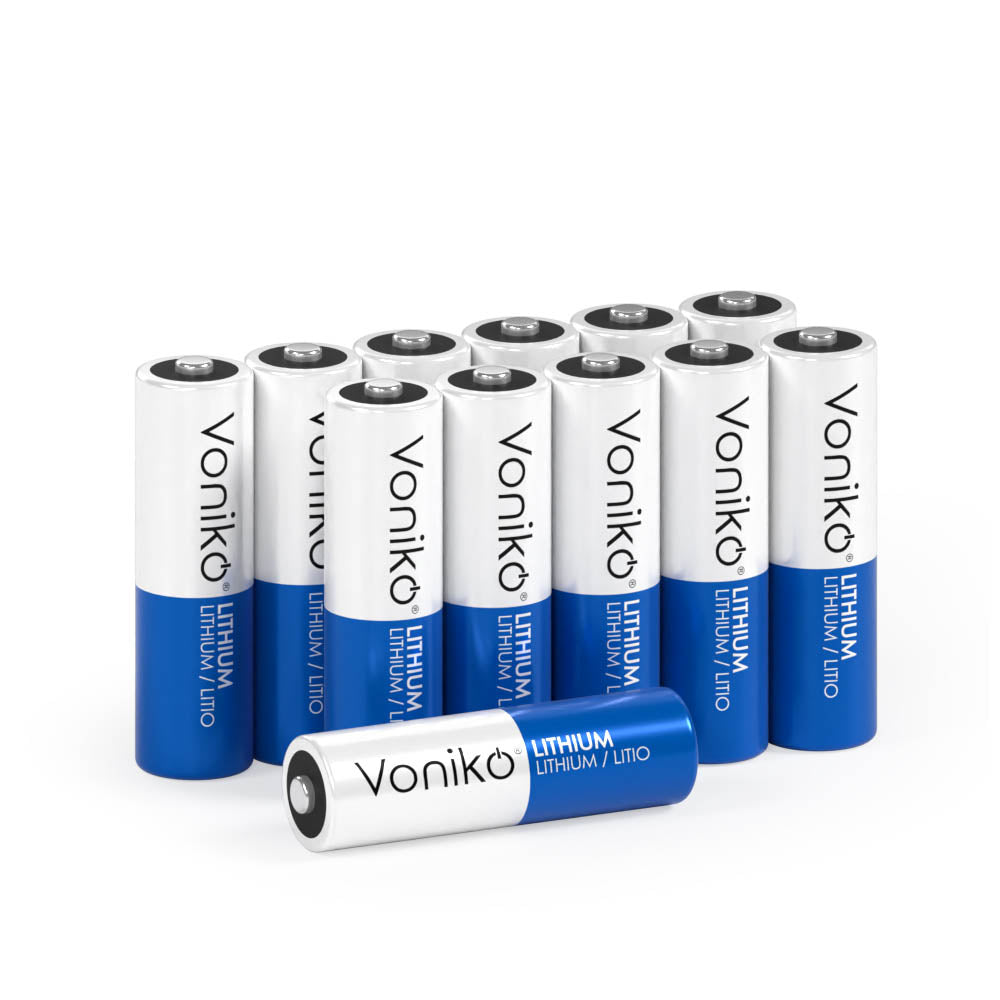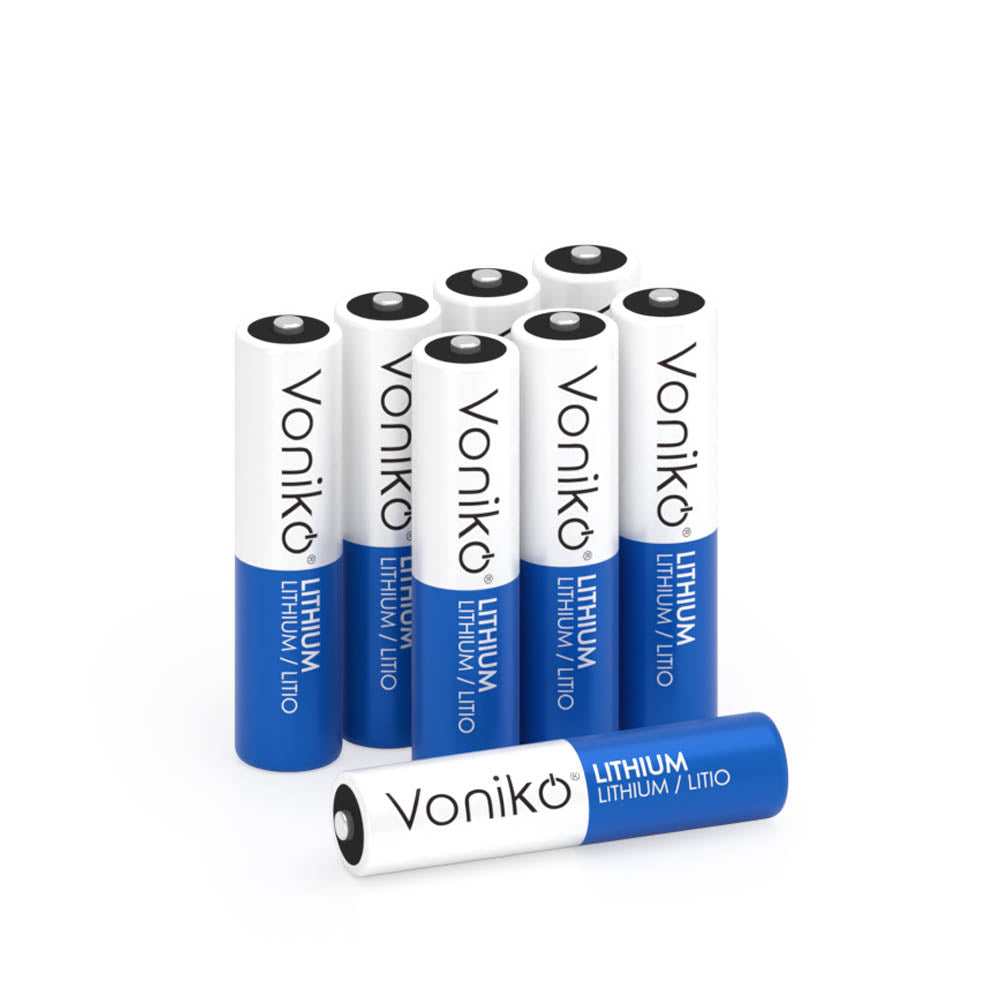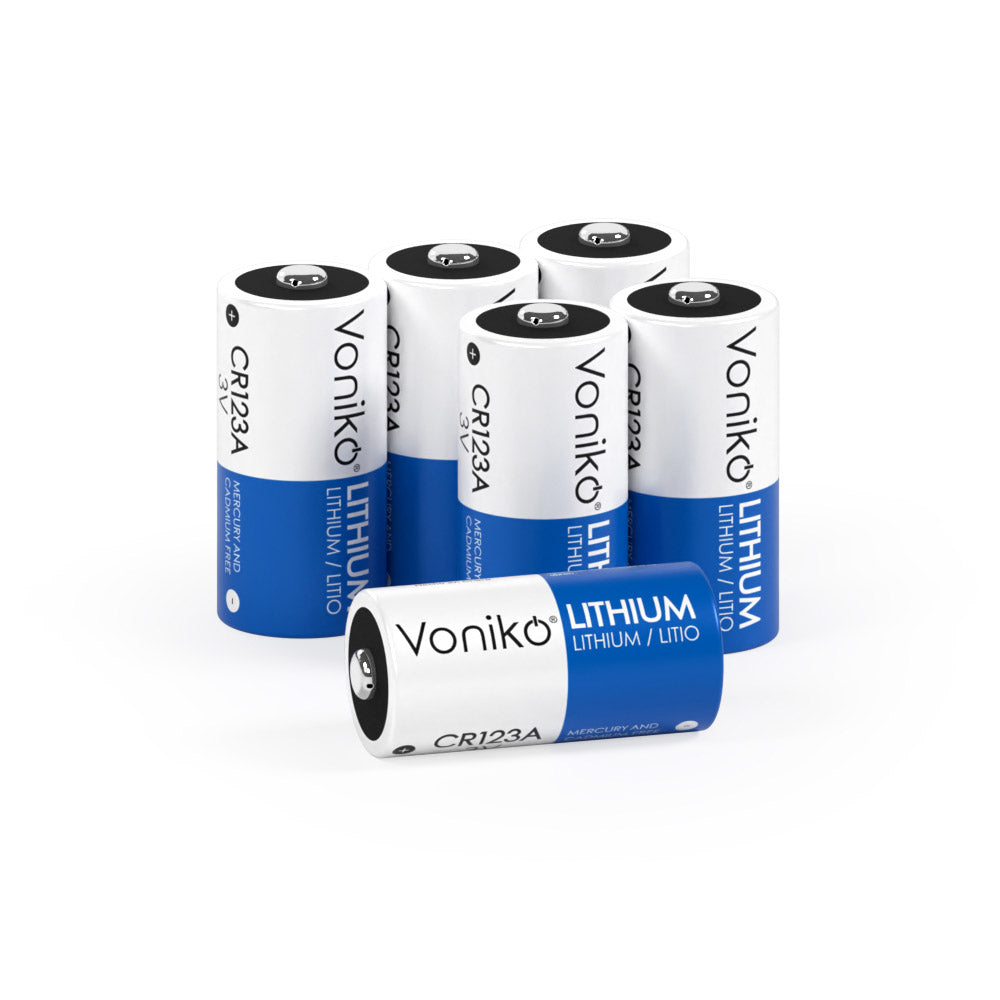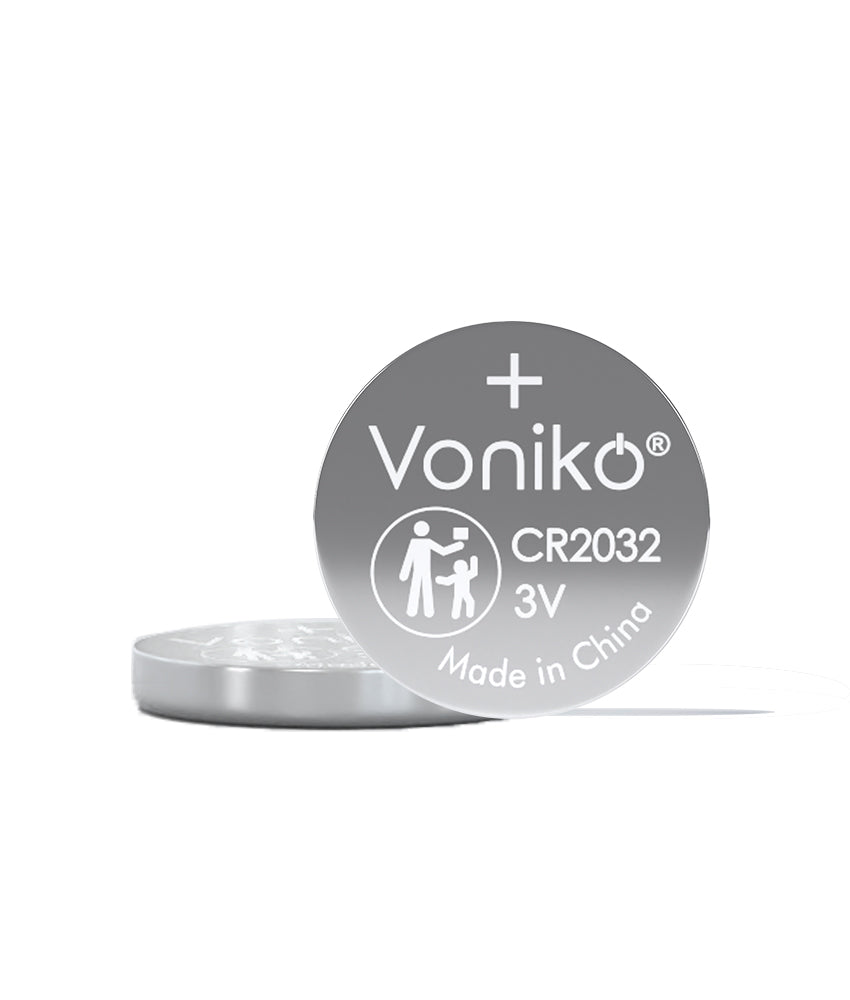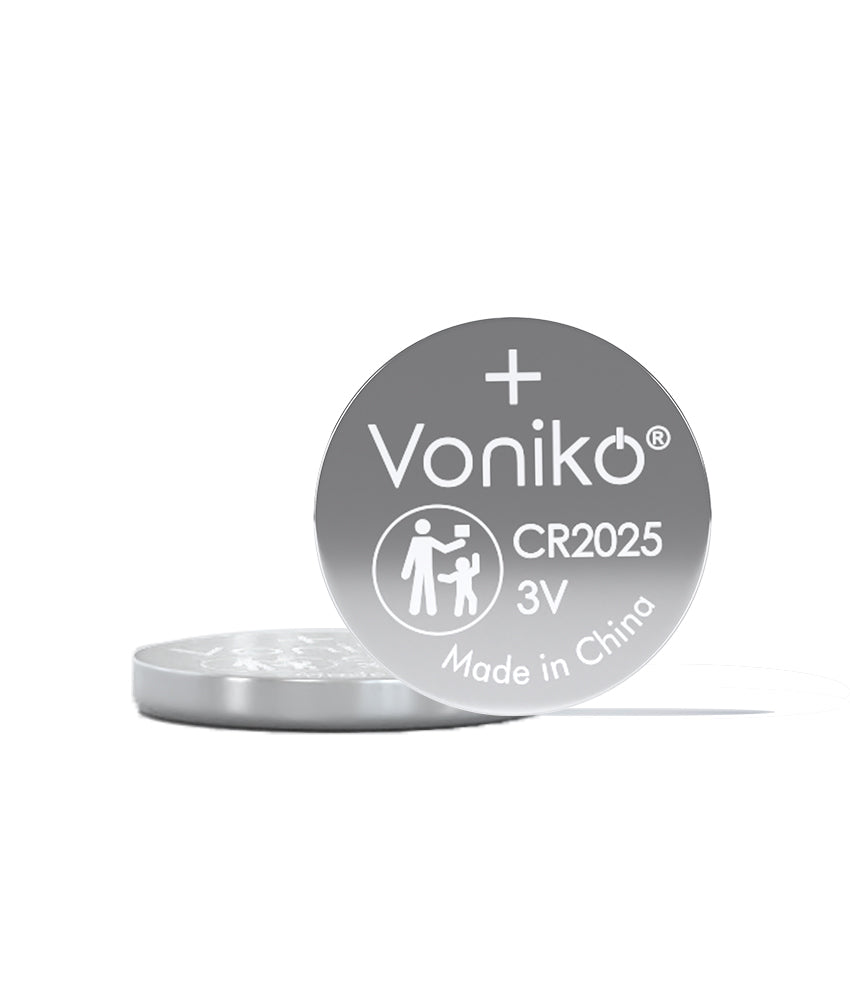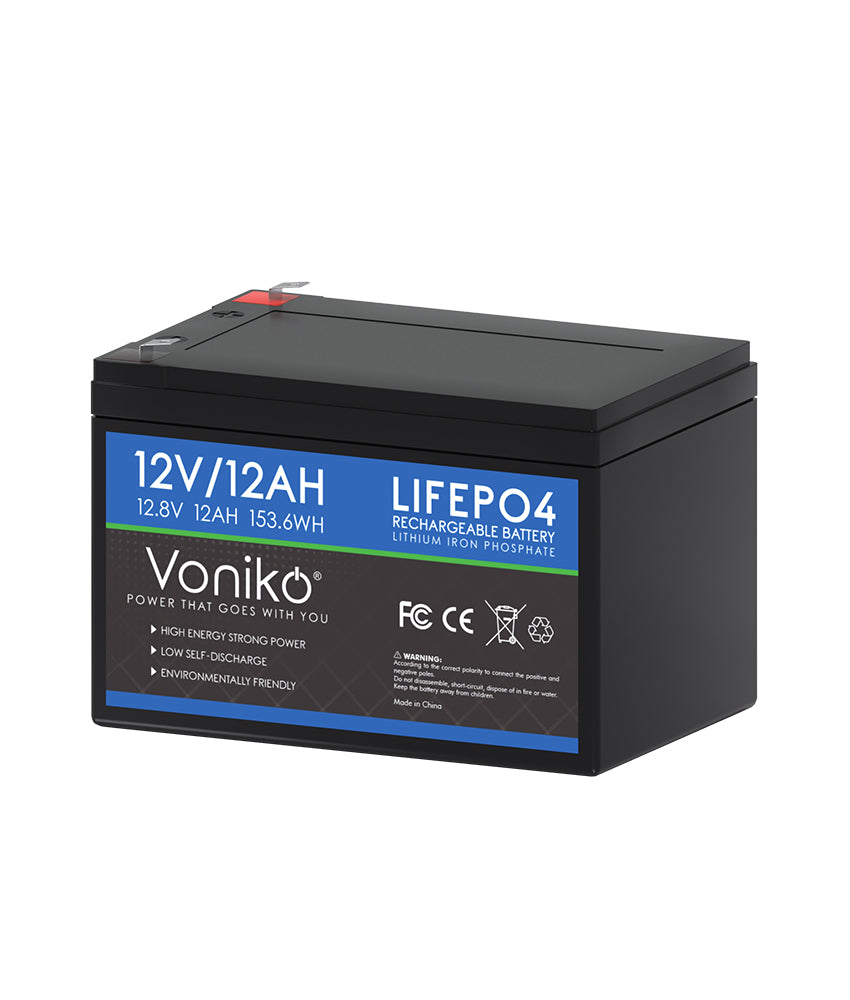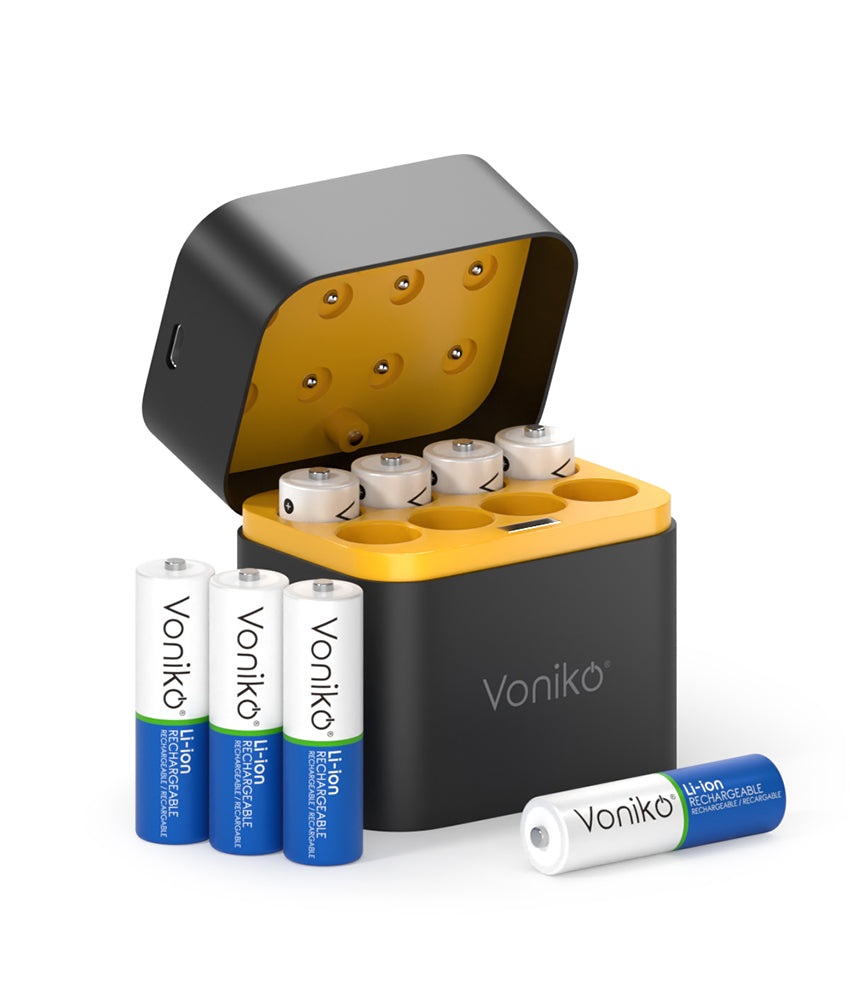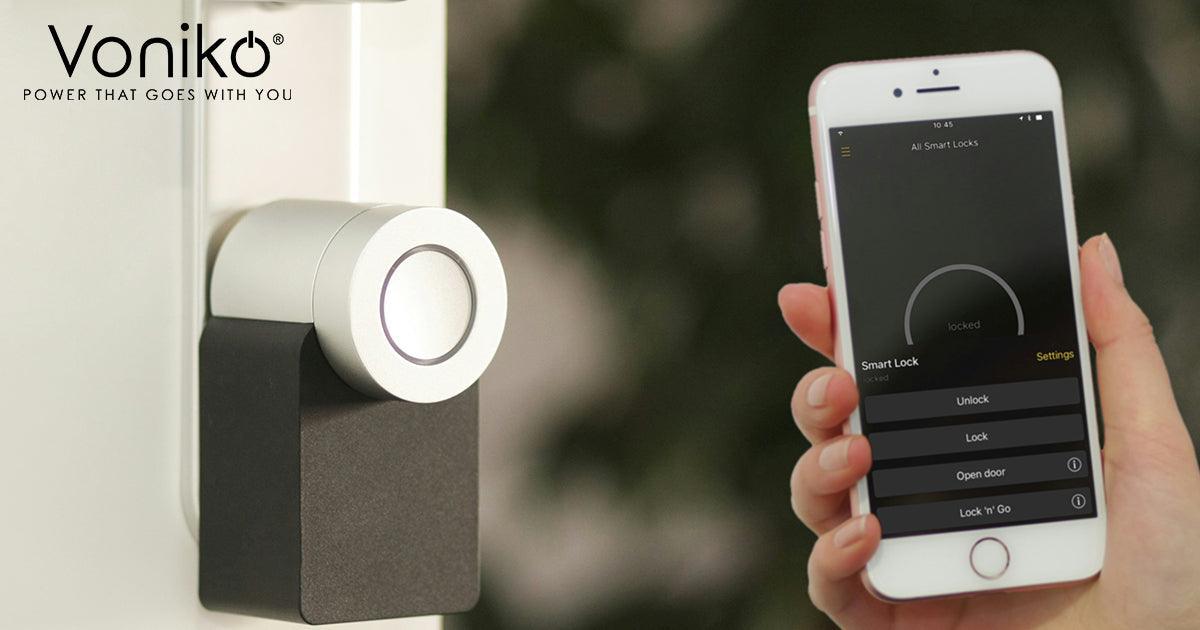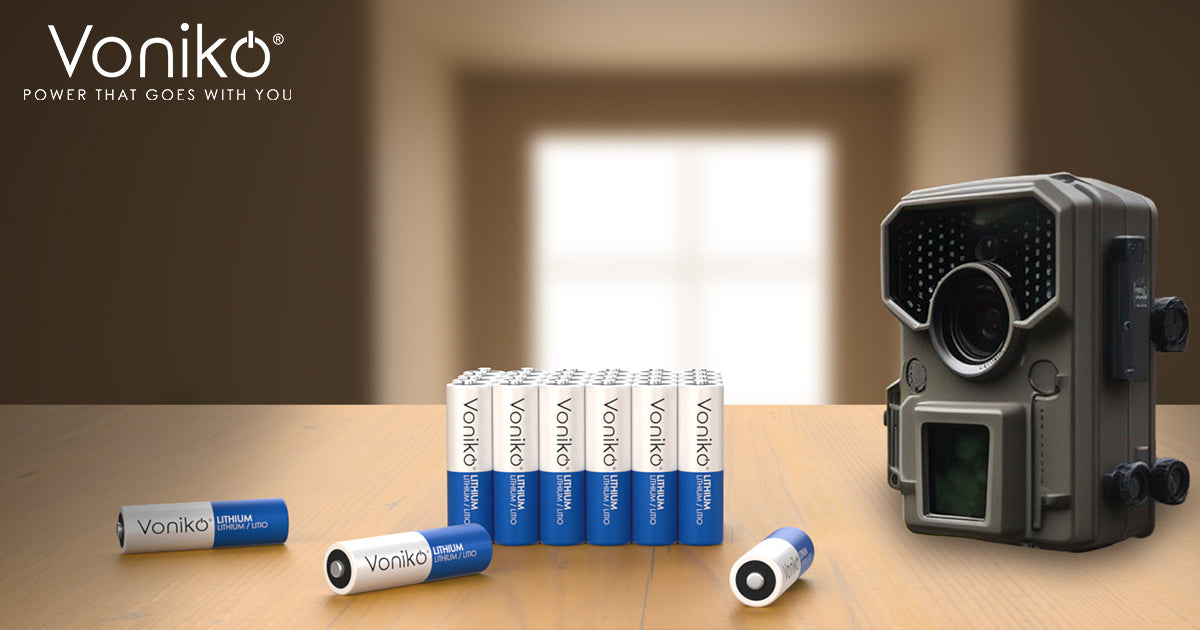Ever been locked out of your own home because your digital door lock's batteries died at the worst possible moment? You're definitely not alone. Dead batteries are the number one reason smart locks fail, and it always seems to happen when you're rushing to get inside during a rainstorm or when your hands are full of groceries.
Digital door locks have revolutionized home security and convenience, but they're only as reliable as the batteries that power them. Unlike a regular deadbolt that works mechanically, your smart lock depends entirely on battery power to function. When those batteries run low, you might find yourself unable to unlock your door with your phone app, keypad, or even key fob.
At Voniko, we've powered countless smart home devices with our premium battery solutions, and we've learned exactly what it takes to keep digital door locks running reliably. Whether you're using AA batteries or need specialized lithium options, choosing the right batteries can mean the difference between smooth operation and frustrating lockouts.
Digital Door Lock Power Requirements
Digital door locks are surprisingly power-hungry devices, especially compared to other smart home gadgets. Every time you unlock your door – whether by app, keypad, fingerprint, or key fob – the lock's motor has to physically turn the deadbolt mechanism. This mechanical action requires significant power, much more than devices that just transmit data or light up displays.
Most digital door locks use 4-8 AA batteries, depending on the brand and model. Some premium locks use proprietary battery packs, but the vast majority rely on standard AA cells that you can buy anywhere. The key is understanding that not all AA batteries are created equal, especially when it comes to high-drain devices like smart locks.
Your lock's power consumption varies dramatically based on usage patterns. A lock that's used 10 times per day will obviously drain batteries much faster than one used only a few times. But usage isn't the only factor – features like Wi-Fi connectivity, LED displays, voice prompts, and automatic locking all contribute to power drain.
Factors affecting battery consumption:
- Usage frequency: More unlocks = faster battery drain
- Smart features: Wi-Fi, Bluetooth, and app connectivity use power continuously
- Temperature extremes: Cold weather significantly reduces battery capacity
- Lock mechanism type: Some designs require more power to operate
- Display and lighting: Backlit keypads and status LEDs consume power
Understanding your specific lock's power requirements helps you choose the best battery type and plan replacement schedules. Check your lock's manual for manufacturer recommendations, but don't assume those suggestions are always the most cost-effective or reliable options.
Why Alkaline Batteries Often Fall Short
Many digital door lock manufacturers recommend alkaline batteries, and they're certainly the most widely available option. However, alkaline batteries have several limitations that make them less than ideal for smart locks, especially in challenging environments or high-usage situations.
The biggest issue with alkaline batteries in digital door locks is their poor performance in cold weather. If your front door faces north or gets limited sunlight, temperatures around the lock can drop significantly below ambient air temperature. Alkaline batteries can lose 50% or more of their capacity when temperatures drop below freezing, which means your lock might fail during winter months when you need reliable access most.
Alkaline batteries also struggle with the high current demands of smart lock motors. When you activate your lock, it needs a sudden burst of power to turn the deadbolt mechanism. As alkaline batteries age, their internal resistance increases, making it harder for them to deliver these power bursts effectively. This can lead to slow or incomplete lock operation, or complete failure to unlock.
Common alkaline battery problems in smart locks:
- Cold weather failures: Dramatic capacity loss below 32°F
- Voltage drop under load: Insufficient power for motor operation
- Inconsistent performance: Gradual decline in reliability as batteries age
- Shorter lifespan: Frequent replacement needs in high-usage locks
- Potential leakage: Risk of corrosive damage to expensive lock electronics
While alkaline batteries might work fine for low-drain devices like TV remotes, smart locks demand more reliable power sources. The frustration and potential security risks of lock failures make upgrading to better batteries a smart investment.
The Lithium Advantage for Smart Locks
Lithium batteries are hands down the best choice for digital door locks, and once you make the switch, you'll wonder why you ever used anything else. They cost more upfront, but the performance benefits and longer lifespan make them much more cost-effective in the long run.
The most impressive advantage of lithium batteries is their cold weather performance. While alkaline batteries struggle in freezing temperatures, lithium batteries maintain consistent performance even in extreme cold. This reliability is crucial for exterior door locks that face harsh weather conditions throughout the year.
Lithium batteries also deliver much more consistent voltage throughout their discharge cycle. This means your smart lock gets steady, reliable power from the first day you install fresh batteries until they're completely depleted. You won't experience the gradual performance degradation that's common with alkaline batteries as they age.
Why lithium batteries excel in smart locks:
- Extended lifespan: 3-5 times longer than alkaline in high-drain applications
- Cold weather reliability: Consistent performance down to -40°F
- Stable voltage output: Steady power delivery throughout battery life
- High current capability: Handles motor startup demands effortlessly
- Low self-discharge: Maintains charge during storage and low-usage periods
The longer lifespan of lithium batteries also means fewer battery changes, which reduces maintenance hassle and the risk of being locked out due to unexpected battery failure. When you factor in the extended life and superior reliability, lithium batteries often cost less per year than constantly replacing alkaline batteries.
Battery Life Expectations for Different Lock Types
Battery life in digital door locks varies widely depending on the lock type, features, and usage patterns. Understanding what to expect helps you plan battery replacements and avoid unexpected lockouts. Most manufacturers provide battery life estimates, but these are usually based on ideal conditions and moderate usage.
Basic electronic deadbolts with keypad entry typically offer the longest battery life since they have fewer power-hungry features. These locks might last 8-12 months on alkaline batteries or 2-3 years with lithium batteries under normal residential use. However, if you have teenagers who forget their keys regularly, expect much shorter battery life due to increased usage.
Smart locks with Wi-Fi connectivity consume significantly more power due to their constant connection to your home network. These locks typically need battery replacement every 3-6 months with alkaline batteries, but can last 12-18 months with quality lithium batteries. The exact lifespan depends heavily on how often the lock communicates with your phone app and smart home system.
Typical battery life by lock type:
- Basic keypad locks: 8-12 months (alkaline), 2-3 years (lithium)
- Bluetooth smart locks: 6-10 months (alkaline), 18-24 months (lithium)
- Wi-Fi connected locks: 3-6 months (alkaline), 12-18 months (lithium)
- Full-featured smart locks: 2-4 months (alkaline), 8-12 months (lithium)
Usage patterns dramatically affect these estimates. A lock used 20+ times per day will drain batteries much faster than one used only a few times. Similarly, locks in high-traffic commercial settings need more frequent battery replacement than residential installations.
Temperature Impact on Digital Lock Battery Performance
Temperature is probably the most underestimated factor affecting digital door lock battery performance. Your front door lock faces whatever Mother Nature throws at it, and extreme temperatures can dramatically reduce battery life and reliability.
Cold weather is particularly brutal on batteries. When temperatures drop below freezing, the chemical reactions inside batteries slow down significantly, reducing their ability to deliver power. This is especially problematic for smart locks because they need burst power to operate the motor mechanism. A battery that works fine at 70°F might completely fail to operate your lock at 10°F.
Hot weather also affects battery performance, though usually not as dramatically as cold. Extreme heat can accelerate battery self-discharge and potentially cause leakage in lower-quality batteries. If your door gets direct afternoon sun, the lock housing can become quite hot, creating challenging conditions for any battery type.
Temperature effects on battery performance:
- Below 32°F: Alkaline batteries lose 20-50% capacity
- Below 0°F: Alkaline batteries may fail completely
- Above 100°F: Accelerated self-discharge and potential leakage
- Temperature cycling: Repeated freeze/thaw cycles stress battery chemistry
This is where lithium batteries really shine. Our premium lithium options maintain consistent performance across a much wider temperature range, making them essential for exterior door locks in climates with harsh winters or extremely hot summers.
Smart Lock Features That Drain Batteries Faster
Modern smart locks pack impressive features, but each convenience comes with a power cost. Understanding which features consume the most battery power helps you balance functionality with battery life, and adjust settings to optimize performance.
Wi-Fi connectivity is one of the biggest battery drains in smart locks. Maintaining a constant connection to your home network requires continuous power, and weak Wi-Fi signals make the problem worse as the lock works harder to maintain connectivity. If your lock is far from your router, consider adding a Wi-Fi extender to improve signal strength and reduce battery drain.
LED displays and backlighting also consume significant power, especially if they stay lit for extended periods after each use. Some locks allow you to adjust display timeout settings or brightness levels, which can help extend battery life without completely eliminating these useful features.
Power-hungry smart lock features:
- Wi-Fi connectivity: Constant power draw for network connection
- Bluetooth with always-on advertising: Continuous signal broadcasting
- LED displays and backlighting: Power consumption increases with brightness and duration
- Voice prompts and audio feedback: Speaker operation requires substantial power
- Automatic locking timers: Motor operation uses significant power
- Smartphone app integration: Frequent status updates and commands
Many smart locks offer power-saving modes or settings that can help extend battery life. These might include reducing LED brightness, shortening display timeout periods, or limiting automatic status updates. While these adjustments might reduce some convenience, they can significantly extend the time between battery replacements.
Signs Your Smart Lock Batteries Need Replacement
Don't wait for complete battery failure before replacing your smart lock batteries. Most quality locks provide several warning signs that batteries are getting low, giving you time to plan replacement before you're locked out of your home.
The most obvious warning is a low battery alert on your smartphone app or audible warning from the lock itself. However, don't ignore more subtle signs of declining battery performance. If your lock seems slower to respond, makes different sounds during operation, or occasionally fails to complete the locking/unlocking cycle, weak batteries might be the culprit.
Many smart locks also start reducing features as batteries weaken to preserve power for basic lock operation. You might notice that LED displays become dimmer, voice prompts stop working, or smartphone connectivity becomes unreliable. These are all signs that battery replacement should be a priority.
Warning signs of weak batteries:
- Low battery alerts: App notifications or audible warnings
- Slower operation: Lock takes longer to respond to commands
- Incomplete cycles: Lock starts but doesn't finish locking/unlocking
- Reduced features: LEDs dim, sounds quiet, or connectivity issues
- Erratic behavior: Intermittent failures or unexpected responses
Keep fresh batteries on hand and replace them as soon as you notice any of these warning signs. It's much easier to replace batteries proactively than to deal with a completely dead lock when you need access to your home urgently.
Installation Tips for Maximum Battery Life
Proper battery installation might seem straightforward, but there are several tips that can help maximize battery life and prevent premature failure in your digital door lock. These simple steps can add months to your battery life and prevent frustrating power-related issues.
Always use batteries of the same brand and type in your lock, and replace all batteries at the same time. Mixing different battery types or replacing only some batteries creates imbalanced discharge patterns that can reduce overall performance and lifespan. Even if some batteries seem fine, replace them all together for best results.
Before installing new batteries, clean the battery contacts in your lock with a dry cloth or fine sandpaper to remove any corrosion or oxidation. Poor contact between batteries and terminals increases resistance, which reduces efficiency and can cause premature battery failure.
Battery installation best practices:
- Use matching batteries: Same brand, type, and ideally from the same package
- Replace all batteries together: Don't mix old and new batteries
- Clean contacts: Remove corrosion and ensure good electrical connection
- Check orientation: Verify positive and negative alignment before closing compartment
- Test operation: Confirm lock works properly with new batteries installed
Store spare batteries in a cool, dry place away from metal objects that could cause short circuits. Quality batteries like our Voniko AA lithium batteries have excellent shelf life, so you can stock up during sales without worrying about them losing capacity during storage.
Cost Analysis: Premium vs. Budget Battery Options
When it comes to powering your digital door lock, the cheapest batteries are rarely the most economical choice. While premium batteries cost more upfront, their superior performance and longer lifespan often make them significantly more cost-effective over time.
Let's look at real-world costs. A set of budget alkaline batteries might cost 20 but last 15 months. Over a two-year period, you'd spend 32 on lithium batteries, plus you'd have to change batteries six times instead of twice.
But cost isn't just about money – it's also about convenience and reliability. Cheap batteries are more likely to fail unexpectedly, potentially leaving you locked out at inconvenient times. They're also more prone to leakage, which can damage your expensive smart lock and void its warranty.
Total cost of ownership comparison:
- Budget alkaline: Lower upfront cost, frequent replacement, unreliable performance
- Premium alkaline: Moderate cost, better reliability, still temperature-sensitive
- Standard lithium: Higher upfront cost, much longer life, excellent cold weather performance
- Premium lithium: Highest upfront cost, maximum reliability, best overall value
Consider the value of your time and the inconvenience of unexpected lockouts when making your battery choice. The few extra dollars spent on quality batteries can save you significant hassle and potentially prevent security issues from lock failures.
Conclusion
If you're experiencing frequent battery drain, check your lock's settings for power-hungry features that might be unnecessarily active. Many locks have eco-modes or power-saving settings that can extend battery life without significantly impacting functionality.
Remember that your digital door lock is a critical security device that deserves reliable power. Whether you choose our premium alkaline batteries for basic locks or upgrade to lithium options for maximum performance, investing in quality batteries ensures your smart lock provides the convenience and security you expect. Don't let dead batteries compromise your home's security – choose batteries that keep your digital door lock running strong year-round.

